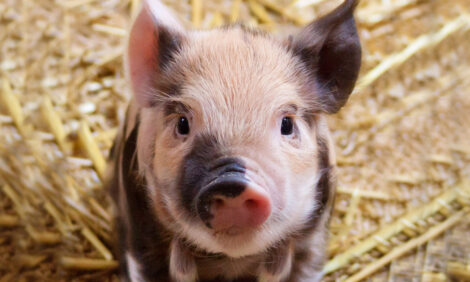



Subclinical Ileitis: Diagnostic and Performance Parameters in a Multi-dose Mucosal Homogenate Challenge Model
Subclinical infection caused by Lawsonia intracellularis significantly reduced growth rate and feed efficiency in weaned pigs in research reported by scientists from Canada and the US. They found that routine diagnostic methods may be negative in sub-clinically infected animals.A dose-titration study was conducted using a Lawsonia intracellularis mucosal homogenate model in weaned pigs by Marie-Anne Paradis, DVM, of Elanco Animal Health in Canada amd co-authors at the University of Minnesota in the US, Nutreco Agresearch in Canada, Swine Services Unlimited Inc., in the US, Ontario Veterinary College in Canada, University of Prince Edward Island in Canada. The study was funded by Elanco, Division Eli Lilly Canada Inc. and published in Journal of Swine Health and Production.
In the introduction to their paper, the researchers explain that porcine proliferative enteropathy (PPE or ileitis) caused by L. intracellularis, an obligate intracellular bacterium, primarily affects the mucosa of the distal ileum. Ileitis has a worldwide distribution, affecting 57 to 100 per cent of herds. Overall, prevalence is underestimated, as some mild or sub-clinically affected farms go undetected and undiagnosed.
Clinically, ileitis manifests itself in chronic and acute forms, they report. Chronic infection, known as porcine intestinal adenomatosis (PIA), occurs in weaned pigs and young growing animals and is characterised by proliferation of mucosal crypt cells in the ileum, jejunum and sometimes large intestine. This chronic condition can result in diarrhoea, decreased feed intake and a slower rate of weight gain. Acute infection occurs primarily in mature pigs (more than four months old), causing proliferative haemorrhagic enteropathy (PHE), which is also characterised by proliferation of the crypt cells. Clinical consequences of PHE include weakness, lethargy, anorexia with bloody diarrhoea from intestinal haemorrhage and sudden death.
According to Paradis and co-authors, in addition to the prominent clinical manifestations of ileitis in pigs, a sub-clinical form of the disease has more recently been recognised and identified both in natural and challenge infection studies. Sub-clinical disease caused by L. intracellularis infection remains incompletely characterised, but results in enterocyte hyperplasia and reduced performance with few or no clinical signs.
They explain that the objective of their study was to further define subclinical ileitis by measuring the impact of varying doses of L. intracellularis on clinical signs, L. intracellularis shedding and seropositivity, performance, and gross and histopathological intestinal changes in weaned pigs.
Significant negative effects on performance were observed in the absence of positive diagnostic indicators or clinical signs. The results obtained showed that subclinical infection can have a detrimental economic impact on swine herds. Even at the lowest inoculum dose, average daily gain during the trial period was 37 per cent lower than that of the non–challenged pigs and feed conversion was 27 per cent higher.
The researchers identified three practical implications of their results. Firstly, subclinical infection caused by L. intracellularis can have a significant impact on growth performance. Second, sub-clinically infected pigs can serve as a source of infection for other pigs in the herd. Finally, routine diagnostic methods such as seroconversion and faecal PCR may be negative in sub-clinically infected pigs.
Reference
Paradis M-A., C.J. Gebhart, D. Toole, G. Vessie, N.L. Winkelman, S.A. Bauer, J.B. Wilson and C.A. McClure. 2012. Subclinical ileitis: Diagnostic and performance parameters in a multi-dose mucosal homogenate challenge model. J Swine Health Prod. 2012;20(3):137–141.
Further Reading
| - | You can view the full report by clicking here. |
Further Reading
|
| - | Find out more information on ileitis by clicking here. |
June 2012






